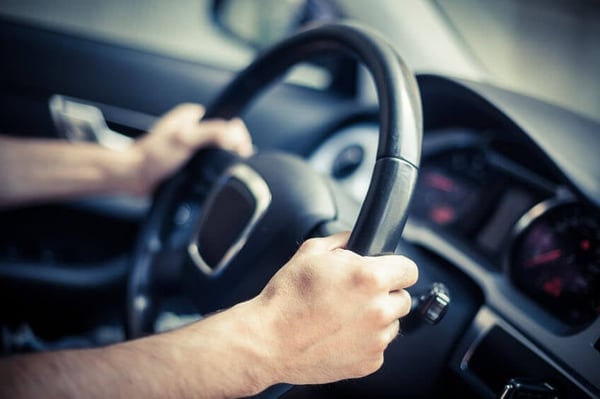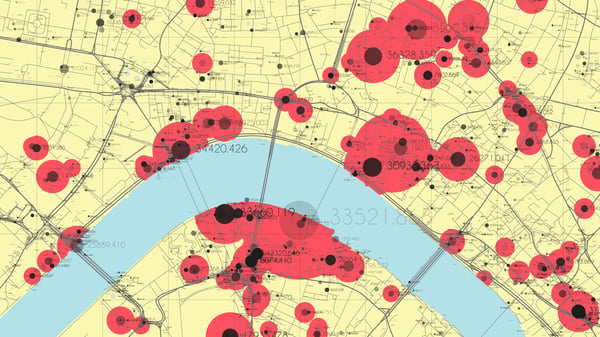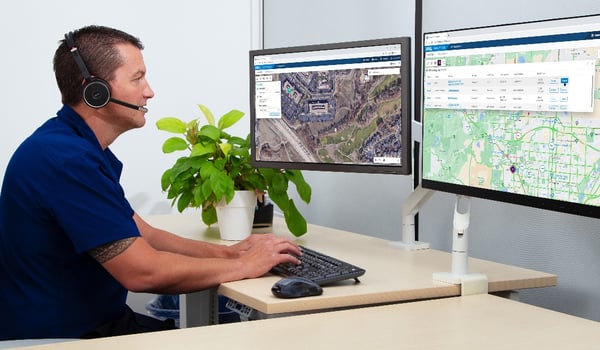4 Must-have Data Points for Dispatch-Billing Alignment and Maximum Reimbursement
Emergency Responders’ Key to Road Safety: Think Like the Drivers Around You
Summer weather is here, and a long day trapped in the office urges many people to rush home to enjoy it
Was this information valuable?

Summer weather is here, and a long day trapped in the office urges many people to rush home to enjoy it. They roll their windows down and play music as they pass motorcycles, construction crews, and pedestrians. The sun shines brightly, causing glares all around. What does this type of environment mean for safe operations of emergency service vehicles? There are increased driving risks posed by the public in summer. If you think about the obstacles faced by a typical summer commuter, you can better prepare yourself for what to expect.

Studies Show Patterns of Unsafe Summer Driving Habits
When warm weather arrives, people spend more time outside, and according to the American Journal of Public Health, less time driving safely. The number of accidents that occur during dry weather actually exceeds the number of accidents during cold, winter weather. Studies from the National Highway Traffic Safety Administration found that the most auto accidents occur during the month of August. Drivers use more caution in winter weather conditions or just stay indoors. Summer brings a heavier volume of vehicles to the road and drivers that are less cautious. It’s important for emergency service vehicle operators to stay aware of these behavior patterns.
Virginia’s Judicial System calculated that there are significantly more traffic violations given during summer months, particularly June through September. They discovered a 238 percent increase in the amount of speeding tickets issued in July versus those issued in December. People drive faster in the summer, posing another threat to emergency service operators.
Summer Brings New Distractions
There are a few other seasonal occurrences that introduce new risks to EMS personnel traversing the roads and responding to emergencies:
- School’s out—This means more young and inexperienced drivers are on the road. It also means more children could be running around near roadways.
- Driving under the influence—The period of time between Memorial Day and Labor Day has been named “The 100 Deadliest Days” for teen drivers, because of increased underage drinking and driving while intoxicated. More specifically, nine of the 10 deadliest days for youth on highways in the U.S. fall between May and August.
- Summer allergies—Not only do allergies cause people to sneeze and cough while driving, but allergy medicines can make them drowsy.
- Road work—Construction causes traffic, redirected routes and driver frustration. These situations make it especially difficult for an emergency services vehicle to get through quickly.
- Motorcycles, bicycles, pedestrians—Summer weather introduces other methods of transportation, which can pose unique threats.
- Summer storms—Dark skies can approach quickly during summer months. Rain, hail, thunderstorms, etc. can cause roads to rapidly accumulate water. At these times, hydroplaning is a serious threat.
- Glares from the sun—In the summer, the sun can cause harsh glares to reflect off of vehicles. Never get into your vehicle without sunglasses on hand and watch for drivers who may have obstructed views—they may be unable to see you coming.
- Driving with windows down—Summer drivers often enjoy fresh air and open windows. This makes for a louder ride, which may interfere with their ability to hear your sirens.
Encourage Your Community to Be More Mindful When Sharing the Road
To ensure that you can respond to emergencies quickly and safely, drivers on the road around you should be made aware of these seasonal distractions. Here are a few ways that you can educate your community about safe summer driving so that you can more effectively do your job:
- Host a mock crash at your local high school. Many schools and communities across the nation present staged crashes with emergency services to show students that tragedies can happen if they drive impaired or distracted. The Minnesota Department of Public Safety offers a free instruction booklet with details on how to plan this type of event: How to Conduct a Mock Crash
- Advocate for the pledge to not text and drive. A nationwide campaign called “It can wait” that asks people to pledge not to text while driving has gotten very popular. Encourage everyone in your community to take the pledge, spread awareness and learn more about the dangers of texting while driving at https://www.itcanwait.com/.
- Rent a driving simulator. Many companies have created EMS driving simulators that are rentable and available for your community to try. Stepping into your shoes might inspire more consideration from drivers who share the roads with you. FAAC, Inc. has a wide range of simulators available.
The next time you’re called to an emergency, use your understanding of what the drivers around you might be experiencing to help keep you and your crew safe. Being more aware of the unique seasonal threats surrounding you and watching closely for them as you travel can make a big difference. Encourage your emergency service operators to practice regular community outreach to help encourage the increased support you need and deserve. Want to learn more ? Visit the VFIS website.
Resources
https://sites.google.com/site/kbrower/
https://www.nhtsa.gov/research-data
https://www.ncbi.nlm.nih.gov/pmc/articles/PMC1449863/
https://www.bactrack.com/blogs/expert-center/35042821-the-most-dangerous-times-on-the-road
https://www.faac.com/training-simulators/public-safety/ambulance/ems-ambulance-driving-simulator/
Related Posts
How EMS Agencies Can Reframe Need and Refocus Resources With Geospatial Analytics
How To Minimize Radio Chatter and Reduce Guesswork With Smarter Dispatch Resource Management
ZOLL Pulse Blog
Subscribe to our blog and receive quality content that makes your job as an EMS & fire, hospital, or AR professional easier.
ZOLL Pulse Blog
Subscribe to our blog and receive quality content that makes your job as an EMS, fire, hospital, or AR professional easier.





